Kathleen M. Hill Gallant1, PhD, RD; Doug Jermasek2, MBA; Shalabh Gupta2, MD
1University of Minnesota-Twin Cities; 2Unicycive Therapeutics, Inc.
Background
- ~600k US patients with end-stage kidney disease (ESKD) undergo dialysis1
- Over 43% of these patients have serum phosphate (P) >5.5 mg/dL, which is associated with increased mineral bone disorder and death risk1
- Recent studies reported P binder non-adherence rates of up to 78% (Figure 1)2-4
- Oxylanthanum carbonate (OLC) is a novel P binder that has a reduced number and size of tablets and possibly improves palatability compared to other phosphate binder pills
- Using dietary strategies and P binders, renal dietitians play an important role in helping patients manage serum P and are close witnesses to patients’ experiences and challenges with P management
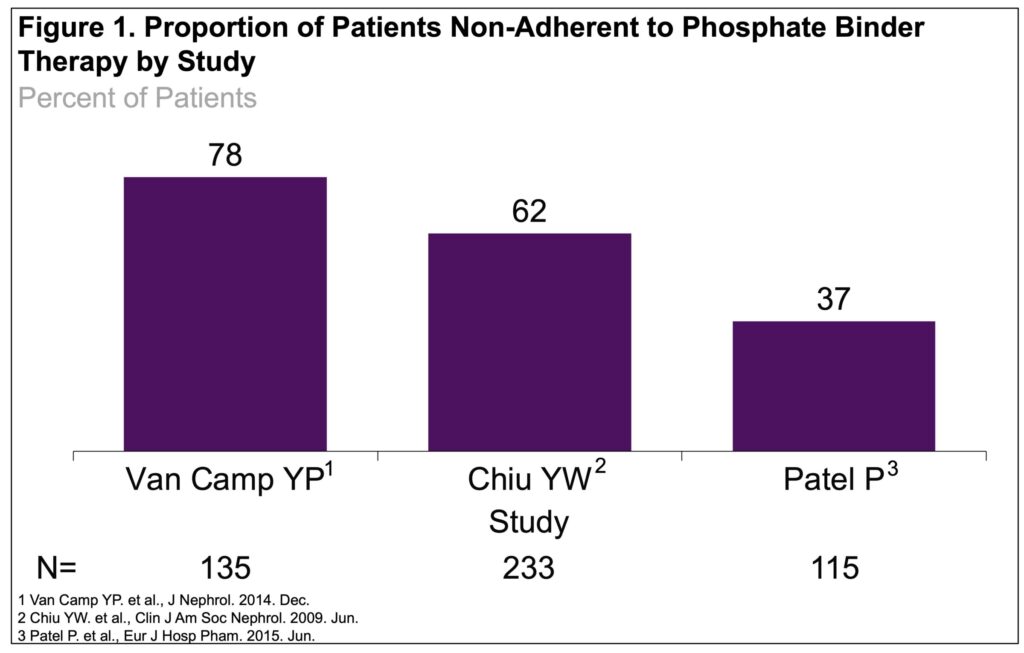

OBJECTIVE
We present results of a recent dietitian survey evaluating perceived reasons for non-compliance to P binder therapy and identifying the perceived appeal of OLC
Methods
- An online survey conducted in May 2022 (RealTime Dynamix™, Spherix Global Insights) evaluated responses from 100 US renal dietitians on their perceptions of why patients do not meet target serum P and their perceived reasons for non-compliance with P binder regimens
- Screening criteria included: Registered dietitians who had 2-40 years in practice; managing ≥50 CKD patients; ≥50% of time seeing patients
Results
- Most dietitians surveyed practiced in a suburban setting (57%) and worked for large dialysis organizations (67%) (Table 1)
- When asked “In your opinion, why are dialysis patients often above target for phosphorus?” most dietitians responded that the two most common reasons were non-compliance to P binder prescriptions (36%) or following a low P diet (34%) (Figure 2)
- Leading reasons for P binder discontinuation include too many pills for sevelamer carbonate and calcium acetate binders, and formulation issues for sucroferric oxyhydroxide (Figure 3)
- When asked “In your opinion, why are patients not compliant with the binder regimen?”, ~1/3 of dietitians attributed non-compliance with patients forgetting to take P binders with meals or snacks, and 16% attributed it to high pill burden
- 34% perceived the lower number of pills required as the most appealing aspect of OLC (Figure 4)
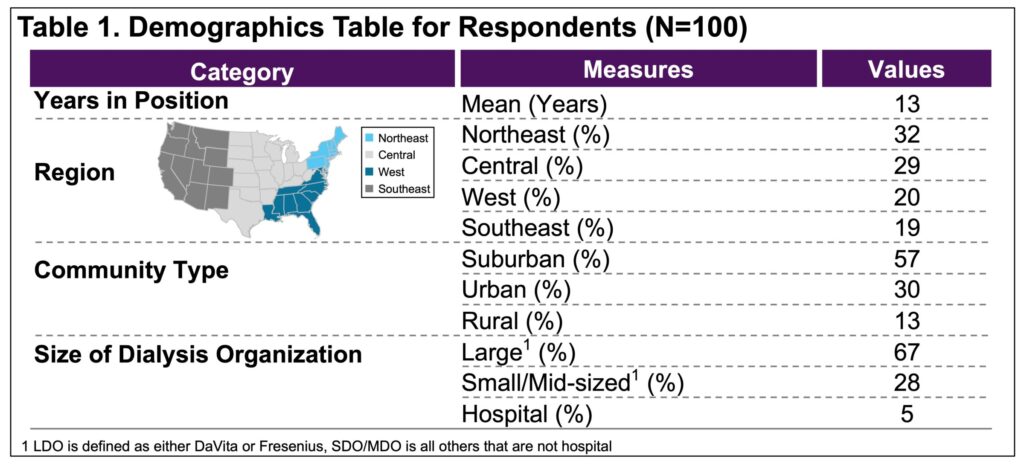
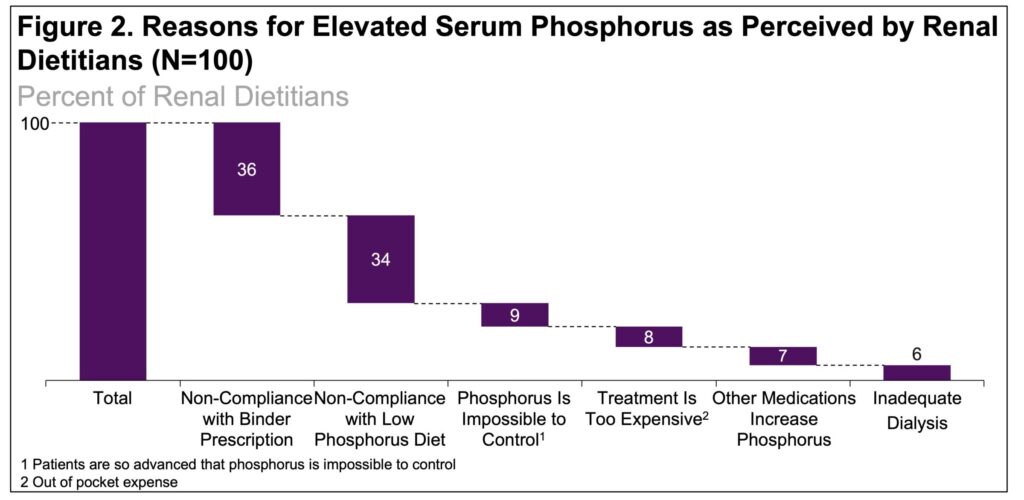
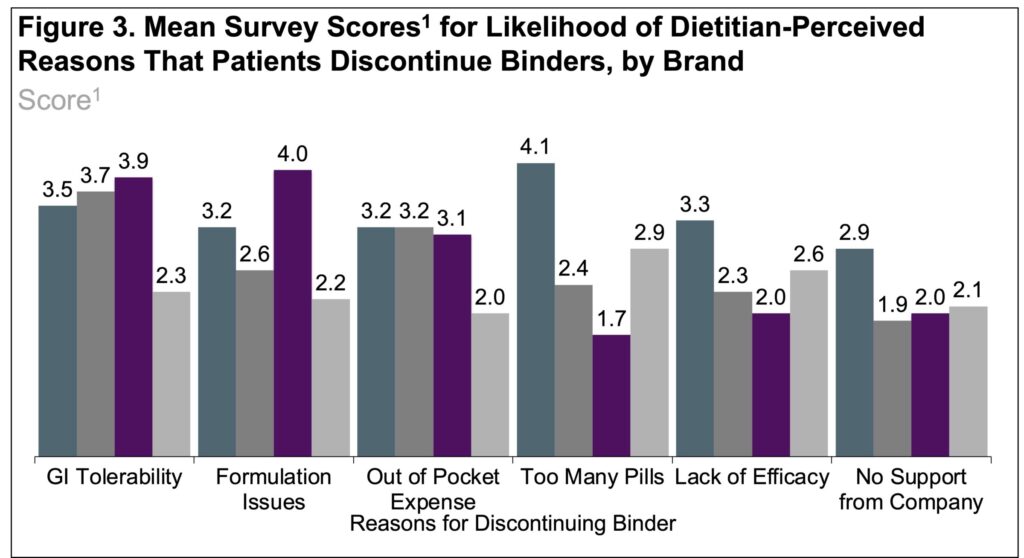
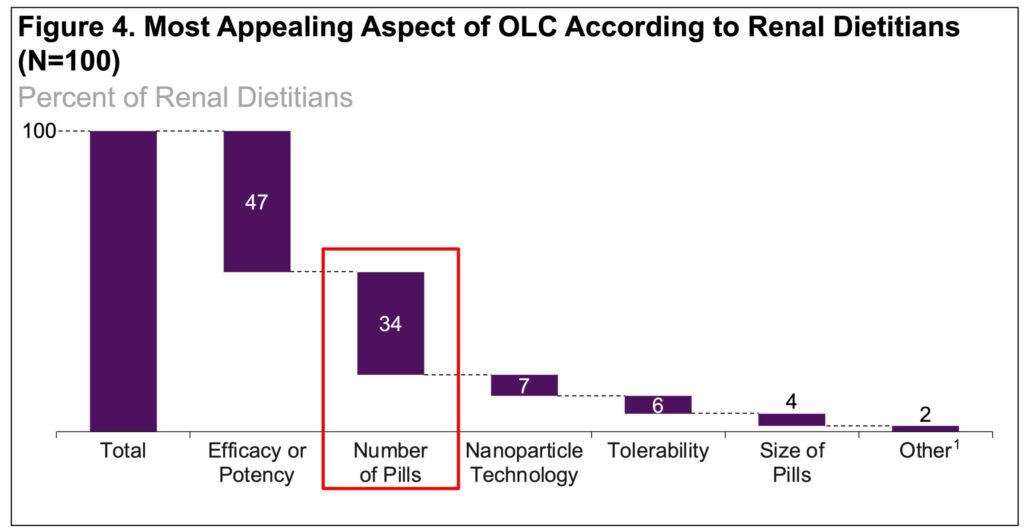

CONCLUSIONS/DISCUSSIONs
- Strategies that reduce pill burden and increase ease of use for patients may promote P binder treatment compliance, which may improve patient outcomes
- OLC, which is a smaller tablet that can be swallowed whole without chewing, may address P binder compliance issues seen with current P binders
References:
1. USRDS Annual Data Report. 2020.
2. Van Camp YP. et al., J Nephrol. 2014. Dec.
3. Chiu YW. et al., Clin J Am Soc Nephrol. 2009. Jun.
4. Patel P. et al., Eur J Hosp Pham. 2015. Jun.
Acknowledgments:
Writing support was provided by Xelay Acumen Group, Inc., and funded by Unicycive Therapeutics, Inc.
Disclosures:
KM Hill Gallant has no financial disclosures and has received consulting fees in the past for work unrelated to this investigation. D Jermasek and S Gupta are employees of Unicycive Therapeutics, Inc.